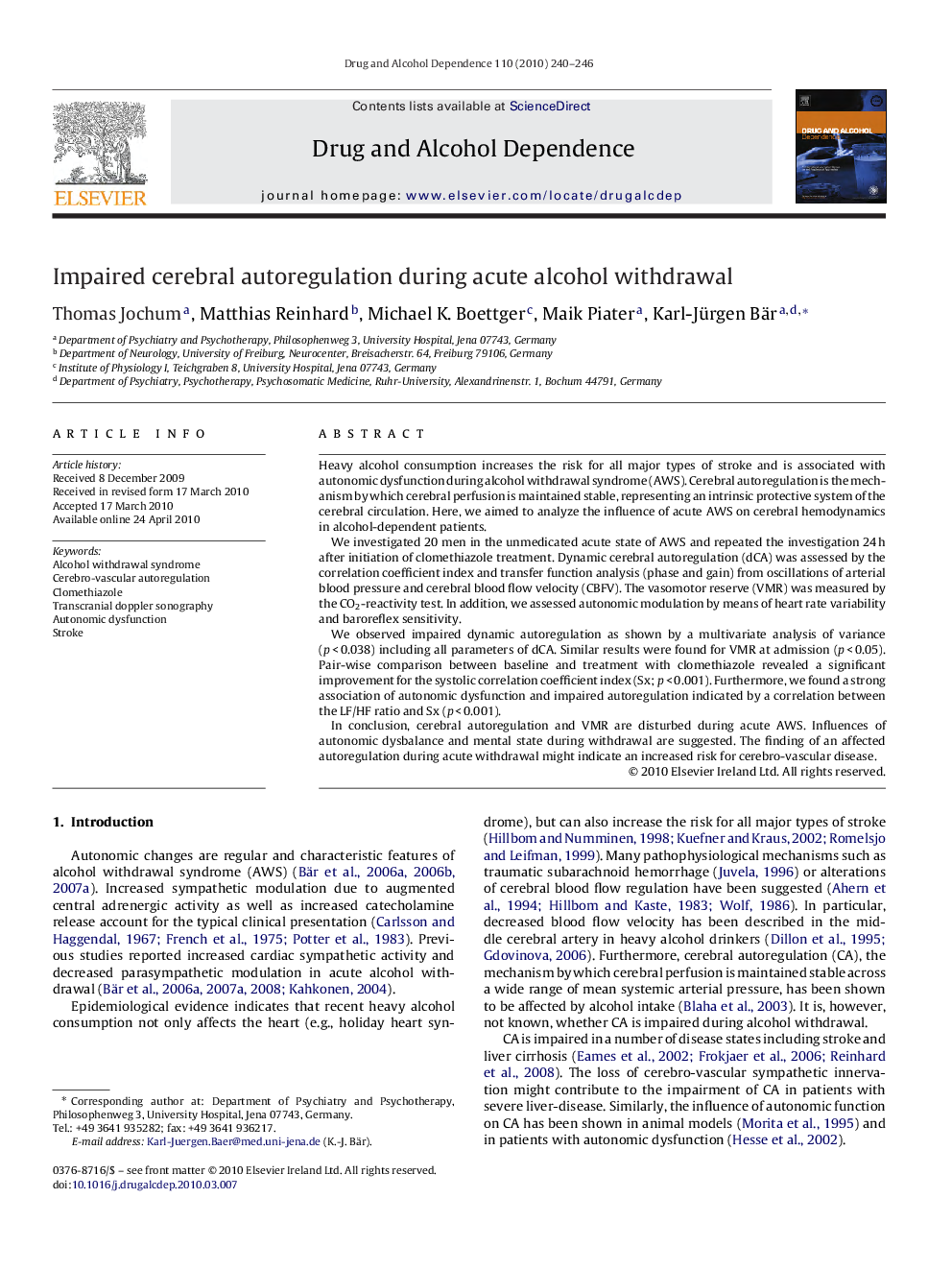| Article ID | Journal | Published Year | Pages | File Type |
|---|---|---|---|---|
| 1070601 | Drug and Alcohol Dependence | 2010 | 7 Pages |
Heavy alcohol consumption increases the risk for all major types of stroke and is associated with autonomic dysfunction during alcohol withdrawal syndrome (AWS). Cerebral autoregulation is the mechanism by which cerebral perfusion is maintained stable, representing an intrinsic protective system of the cerebral circulation. Here, we aimed to analyze the influence of acute AWS on cerebral hemodynamics in alcohol-dependent patients.We investigated 20 men in the unmedicated acute state of AWS and repeated the investigation 24 h after initiation of clomethiazole treatment. Dynamic cerebral autoregulation (dCA) was assessed by the correlation coefficient index and transfer function analysis (phase and gain) from oscillations of arterial blood pressure and cerebral blood flow velocity (CBFV). The vasomotor reserve (VMR) was measured by the CO2-reactivity test. In addition, we assessed autonomic modulation by means of heart rate variability and baroreflex sensitivity.We observed impaired dynamic autoregulation as shown by a multivariate analysis of variance (p < 0.038) including all parameters of dCA. Similar results were found for VMR at admission (p < 0.05). Pair-wise comparison between baseline and treatment with clomethiazole revealed a significant improvement for the systolic correlation coefficient index (Sx; p < 0.001). Furthermore, we found a strong association of autonomic dysfunction and impaired autoregulation indicated by a correlation between the LF/HF ratio and Sx (p < 0.001).In conclusion, cerebral autoregulation and VMR are disturbed during acute AWS. Influences of autonomic dysbalance and mental state during withdrawal are suggested. The finding of an affected autoregulation during acute withdrawal might indicate an increased risk for cerebro-vascular disease.
